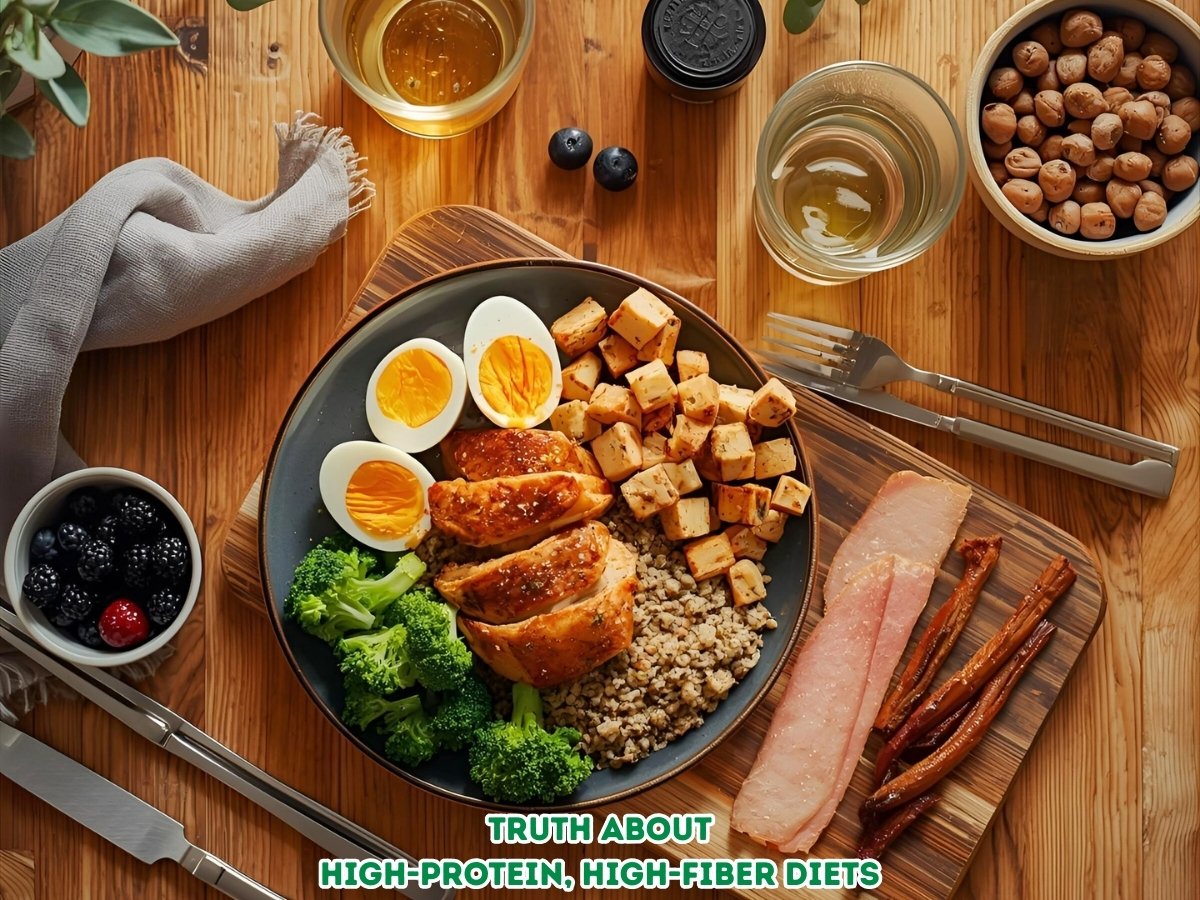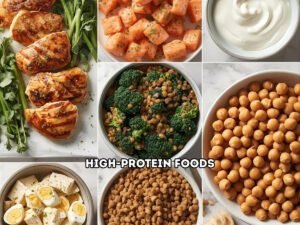The Truth About High Protein High Fiber Diets: Benefits, Risks & Best Practices

Discover the benefits, risks, and best practices of a high-protein high-fiber diet, including top foods, meal plans, and expert tips for weight loss, muscle gain, and gut health.
Learn how to follow this diet safely and effectively for long-term health and balanced nutrition.
Table of Contents
Why High-Protein, High-Fiber Diets Are Trending
In recent years, the high protein high fiber diet has gained remarkable attention among health enthusiasts, fitness experts, and nutritionists alike. Combining protein for muscle support and fiber for digestive wellness, this diet promises a range of health benefits—from weight management to improved gut health.
People are increasingly seeking high protein high fiber diet plans, meal suggestions, and expert advice to optimize their nutrition. Whether you are a beginner looking for high-protein high-fiber breakfast ideas or someone aiming for muscle gain, understanding the science behind this diet is essential for safe and effective results.
What Are High-Protein, High-Fiber Diets? (Definitions & Basics)
A high protein high fiber diet emphasizes consuming foods rich in protein, like lean meats, eggs, dairy, and plant-based sources, alongside foods abundant in dietary fiber, such as fruits, vegetables, legumes, and whole grains.
- Protein: Composed of amino acids, supports muscle building, repair, and satiety. Includes complete proteins from lean meat, fish, eggs, dairy, and plant-based sources like soy, lentils, and beans.
- Fiber: Divided into soluble and insoluble fiber, it aids digestion, controls blood sugar, and supports a healthy gut microbiome. Foods like broccoli, chia seeds, oats, and flaxseeds are excellent sources.
A typical high-protein high-fiber meal plan incorporates balanced servings of both macronutrients to maximize health outcomes.
Top High-Protein Foods to Include

Eating the right high-protein foods is essential to reap the benefits of this diet. Here are key options:
Animal-Based Proteins:
- Lean meats: chicken, turkey, beef
- Fish: salmon, tuna, cod (rich in omega-3)
- Eggs: versatile, nutrient-rich
- Dairy: milk, yogurt, cottage cheese
Plant-Based Proteins:
- Legumes: lentils, chickpeas, beans
- Soy products: tofu, tempeh, edamame
- Nuts & seeds: almonds, chia seeds, flaxseeds
- Protein supplements: whey, casein, and plant-based powders
Including a variety of protein sources ensures you get all essential amino acids, while supporting muscle growth and satiety.
Top High-Fiber Foods to Include
A high-fiber diet complements protein intake by supporting digestion, gut health, and metabolic function. High-fiber foods include:
- Whole grains: brown rice, oats, quinoa, barley
- Vegetables: broccoli, spinach, kale, carrots
- Fruits: apples, pears, berries, bananas
- Seeds & nuts: chia seeds, flaxseeds, pumpkin seeds, almonds
- Supplements: psyllium husk for additional fiber
Fiber can be soluble or insoluble, each playing a distinct role in promoting satiety, stabilizing blood sugar, and supporting the gut microbiome.
Benefits of High-Protein, High-Fiber Diets
Following a high protein high fiber diet offers multiple benefits:
- Weight Management: Protein increases satiety, fiber slows digestion, helping you eat less naturally.
- Muscle Building & Repair: Supports muscle protein synthesis and recovery post-workout.
- Gut Health & Microbiome Support: Fiber nourishes beneficial bacteria, improving digestion and immunity.
- Blood Sugar Regulation: Helps maintain steady glucose levels, reducing diabetes risk.
- Heart Health: Soluble fiber lowers cholesterol, protein supports lean body mass, aiding cardiovascular wellness.
- Energy & Longevity: Balanced diet promotes overall well-being and sustainable energy levels.
Risks & Side Effects to Be Aware Of
While beneficial, high protein high fiber diets have the risk also:
- Kidney concerns: Excessive protein may stress kidneys in predisposed individuals.
- Digestive issues: Sudden high fiber intake can cause bloating, gas, or constipation.
- Cholesterol risk: High animal protein intake may raise cholesterol levels if not balanced.
- Nutrient imbalance: Overemphasis on protein may reduce intake of other essential nutrients.
Safe practices and guidance from a nutritionist or dietitian can mitigate these risks.
Best Practices for Following This Diet Safely
To maximize benefits and reduce risks you have to follow something extra:
- Start gradually: Increase fiber intake slowly to avoid digestive discomfort.
- Balance protein sources: Mix animal and plant proteins.
- Hydration is key: Drink plenty of water to assist fiber digestion.
- Include variety: Incorporate vegetarian high-protein high-fiber foods, snacks, and meals.
- Plan meals: Use high-protein high-fiber meal planning tips for breakfast, lunch, and snacks.
Expert Opinions & Scientific Research
Experts emphasize moderation and balanced intake:
- Registered Dietitians recommend combining protein and fiber for satiety and gut health.
- Harvard School of Public Health highlights fiber’s role in cholesterol reduction and diabetes prevention.
- Clinical studies indicate that a high protein high fiber diet improves weight loss efficiency and metabolic health without compromising nutrient balance.
If you want some more expert things click here.
FAQs People Ask About High-Protein, High-Fiber Diets
Q1: Is high protein high fiber diet bad for kidneys?
- Only excessive protein intake may stress kidneys; individuals with kidney disease should consult a doctor.
Q2: How much fiber should I eat daily?
- Recommended daily fiber intake: 25–38g for adults. Balance with protein for optimal benefits.
Q3: Can a high protein high fiber diet aid weight loss?
- Yes, it enhances satiety and stabilizes blood sugar, supporting sustainable weight management.
Q4: What are safe plant-based protein options?
- Lentils, beans, tofu, tempeh, quinoa, nuts, seeds
Conclusion: The Balanced Truth
The high protein high fiber diet offers substantial health benefits weight management, muscle growth, gut health, and heart support. However, awareness of potential risks like kidney strain or digestive discomfort is vital.
Following best practices, consulting nutrition experts, and including a variety of protein and fiber-rich foods ensures this diet is safe, effective, and sustainable for long-term health.
By adopting a well-planned approach, you can enjoy the full benefits of high-protein high-fiber meals, from breakfast to snacks, while supporting gut, heart, and metabolic health. If you want some more Health related guideline visit HealthHubAu.Com
